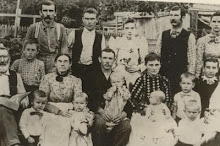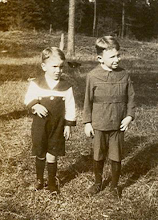Dr. Landrum called in to tell us that the Military Vehicle Preservation Association is celebrating
the 95th anniversary of the 1920 U.S. Army Transcontinental Motor Convoy by running a convoy
from Washington DC, to San Diego. (This is not exactly what he said, but he told me to look it up.)
http://theparisnews.com/news/article_343a3f7a-678e-11e5-9c66-0fa89374bf41.html reports that
In celebration of the anniversary of the 1920 U.S. Army Transcontinental Motor Convoy,
more than 50 historic military vehicles will pass through Paris as they travel from
Washington, D.C., to San Diego. The route is the same one used 95 years ago, when the
Army decided to further its understanding of the practicality of motorized transport and its
place in the U.S. Army by driving the length of the newly-formed Bankhead Highway,
according to a press release from the Military Vehicle Preservation Association.
The above press release from Paris mentions a highway named after a man born in Moscow.
Senator John Hollis Bankhead (1842.09.13–1920.03.01, Dem AL, 1907–death) sponsored the
Federal Aid Road Act, 1916, which supplied matching funds to the states for upgrading roads,
especially those used as postal routes. The plan was authored by Logan Waller Page, director of the Office of Public Roads, but naming rights went to the Senator. The southern route (shown above) for the nation’s second transcontinental highway (the first being the Lincoln Highway, 1913, from Times Square New York to Lincoln Park San Francisco) was viewed as having the advantages of being passable year-round and lying on a low grade without steep mountain climbs.
(Partially from:
http://douglasathas.net/Sub/History%20of%20the%20Bankhead%20Highway%20%28Jerry%20Flook%29.pdf)
Senator Bankhead married Tallulah James Brockman. He became:
(1) the father of John Hollis Bankhead II (1872.07.08–1946.06.12, Senator, Dem AL, 1931–death),
(2) the father of William Brockman Bankhead (1874.04.12–1940.09.15, HR, Dem AL, 1917–death,
47th Speaker of the House 1936–death, in turn the father of Tallulah Brockman Bankhead),
(3) the “father of good roads in the U. S. Senate” (Thomas McAdory Owen and Marie Bankhead
Owen, History of Alabama and Dictionary of Alabama Biography, 1921, p. 90; I had not known
there were roads in the U. S. Senate, let alone anything “good” there).
In April 1920 the final leg of the Bankhead Highway was established between El Paso and San
Diego. (ibid.) The 1920 Motor Transport Corps convoy then left Washington, D.C. on June 14 and
followed the Bankhead Highway to San Diego, California, where it arrived on October 2 (today
just 95 years ago, the anniversary Dr. Landrum notified us of).
A smaller expedition than the first (1919, from Washington to Oakland and ferried to “Frisco”),
this convoy consisted of 50 vehicles, 32 officers, and 160 enlisted men under Col. John F. Franklin.
A rate of 45–60 miles per day was initially estimated, commensurate with that of the first convoy.
The convoy’s trip proceeded smoothly as far as Atlanta. However, as it moved west into Tennessee, its progress slowed. Detours became necessary due to flooding and the crossing of the “black gumbo” of the Mississippi River proved very problematic. Despite high hopes, the Southern United States proved to be the worst part of the trip. The convoy encountered almost impassable sands between Maricopa and Wellton, Arizona.
Like the first convoy, at every stop the expedition was met by local celebrations and dances.
After 111 days and an average rate of less than 30 miles per day, the convoy reached the West Coast where an officer’s banquet was given in San Diego. After its arrival in San Diego, the convoy then went north to Los Angeles and was broken up, its equipment distributed to California’s public services as part of a program to make use of war surplus.
The officers of the expedition became convinced by their experience that the maintenance of a
national highway system should be the province of the federal government, as supported by the
Townsend Bill. However, despite the widespread friendly greetings received by the convoys across the nation, neither generated enough public support to ensure passage of the Townsend Bill, which failed and was replaced by the Federal Highway Act of 1921. Both convoys are identified on the Zero Milestone on the Ellipse in Washington, D.C. Thanks to Wikipedia for this info.
Photos from Memorandum for Captain J.D. (Little Lord?) Fauntleroy (there really is such
a name?), Report of Observation of Bankhead Highway Transcontinental Convoy, August 25, 1920.
This was one of the good roads?
Coast to Coast: The Bankhead National Highway and Its Importance in History
by Rob Henderson, May 11, 2015 (for pictures, copy & paste web site below into URL box)
http://www.itstactical.com/centcom/history-centcom/coast-to-coast-the-bankhead-national-highway-and-its-importance-in-history/
With all of our modern conveniences, it’s easy to take simple things for granted. Interstates and
highways facilitate quick travel over long distances and the network of roads means that we can
travel almost anywhere easily. However, up until the early 1900’s, crossing a state the size of Texas
was a daunting affair that could take weeks or even months.
Where We’re Going, We Don’t Need Roads
As automobiles became more prevalent and affordable in early 1900’s, people were able to cover
more distance than they previously could on horseback. As the automobile took over as the dominant
form of transportation, the need for better road systems emerged. A national road program didn’t
exist, which meant that cities, counties and even private individuals were individually maintaining
the roads that existed. Early roads commonly followed railroad systems and the location of many
highways today reflect the paths of the railways.
The first road systems were incredibly difficult to navigate due to lack of organization and planning.
The same road could have multiple names as it ran through different townships. Roads that ran through
areas of private property weren’t maintained often and occasionally, the property owner might even
put obstacles in the road to discourage travel.
Auto Clubs, Roll Out
With the growing popularity of the automobile, car enthusiasts began to organize and lead the charge
for constructing new and improved roads. In 1912, the Fort Worth – El Paso Highway Association
was formed to promote road development between Fort Worth and El Paso. The association hired
a surveyor to inspect the route and find the best method to combine the existing roads and new
construction. The highway system that was being created would eventually be adopted as part of the
Bankhead Highway, named for Alabama Politician John Hollis Bankhead, an early leader in the national
road building movement. Auto Clubs were instrumental in the development of road systems and helped
to pass the Federal Aid Highway Act of 1916 through Congress.
The act meant that the federal government would supply funding to improve highways and forced
states to create highway departments. In Texas, the Highway Commission identified 25 highways
that would compose the Texas Highway System. At the top of the list was the Texarkana, Dallas,
Forth Worth, and El Paso Highway, named SH 1 (State Highway 1).
The Bankhead National Highway
Formed in 1916, The Bankhead National Highway Association’s goal was to create a transcontinental
highway running from Washington D.C. to San Diego. The association set out to designate the newly
formed state highways as an official route along the Bankhead Highway. The recently designated
SH 1 was selected in Texas as the official highway for the route through the state.
Bankhead was extremely useful for commuters, the Postal Service, and even the Military. Upon
its completion in April of 1920, it became one of the first transcontinental highways in the United
States. Traffic levels that began at 200 cars per day traveling the road, quickly rose to above 1,000.
As the highway grew in popularity, the route along it saw a booming growth of industry.
The Pithyosseous, October 2, 2015 Page 5
Industrial Strength
The Bankhead Highway was also an integral part of the growth in the United States Industry.
The highway gave companies the ability to quickly transport raw materials and finished products
between cities and states. Many companies built facilities along the route of these highways to increase
the speed of travel between locations.
In addition to private industry, the United State Military extensively used the highway in the
build up to World War II. With many World War I era military installations being located on the
route and after running several tests on the highway, the US Army designated the Bankhead Highway
as a route of primary military importance. This designation meant that many new military facilities
were constructed along the route and also led to increased federal funds to maintain the highway.
As more and more families gained access to automobiles, a new tourism industry emerged. The
idea of a road-trip was exciting to many people that hadn’t even ventured out of their own counties.
This new found tourism saw the creation of state parks and other historic sites along the Bankhead
Highway, as well as tourist-centric filling stations and attractions. After World War II the Interstate
Highway system saw even more expansion, as locations sprang up that catered to tourists. Things
like roadside attractions and motels meant that more people were treating the road-trip itself as a
vacation and not just the destination.
The Highway Today
With the rise of Interstates, highways like Bankhead declined in popularity and many people
aren’t even aware that a historical highway might run right through their town. In fact, after looking
into it, we discovered that the Bankhead Highway actually ran right through our front yard. We now
know it as Highway 180, or Lancaster Avenue, which is just across the tracks from where ITS HQ
is now. Our original location, after ITS moved out of Bryan’s garage years ago, was actually on
Lancaster. Running parallel to the railroad tracks, there are still many small shops and old motels
dotted along the highway, but they’re quickly disappearing as other businesses and facilities pop up.
Later this year, The Military Vehicle Preservation Association will be re-tracing the route of the
historic Military convoy along the Bankhead Highway. They’ll be stopping along the way to discuss
the history of the vehicles and the highway itself. Activities like this are important for keeping
history alive and are a good reminder of how instrumental highways like the Bankhead were.
It’s also a good reminder of days when businesses were built on the backs of the newly created
highways. Where roadside vendors would travel miles just to sell their wares alongside a bustling
roadway and when the destination wasn’t as important as the route you took to get there.
Comment to this article, submitted by Jeff Harris, May 11, 2015
Also look into the history of the Lincoln highway where a young military officer by the name of
Dwight Eisenhower crossed coast to coast about the same time.
Cribbed from Wikipedia
The Dwight D. Eisenhower National System of Interstate and Defense Highways (the Interstate
Highway System) is named for President Dwight D. Eisenhower who championed its formation.
Construction was authorized by the Federal Aid Highway Act of 1956. The original portion was
completed 35 years later, although some urban routes were cancelled. The network has since been
extended to 47,856 miles. About ¼ of all vehicle miles driven in the U.S. use the Interstate system.



With all of our modern conveniences, it’s easy to take simple things for granted. Interstates and highways facilitate quick travel over long distances and the network of roads means that we can travel almost anywhere easily. However, up until the early 1900’s, crossing a state the size of Texas was a daunting affair that could take weeks or even months.
ReplyDelete